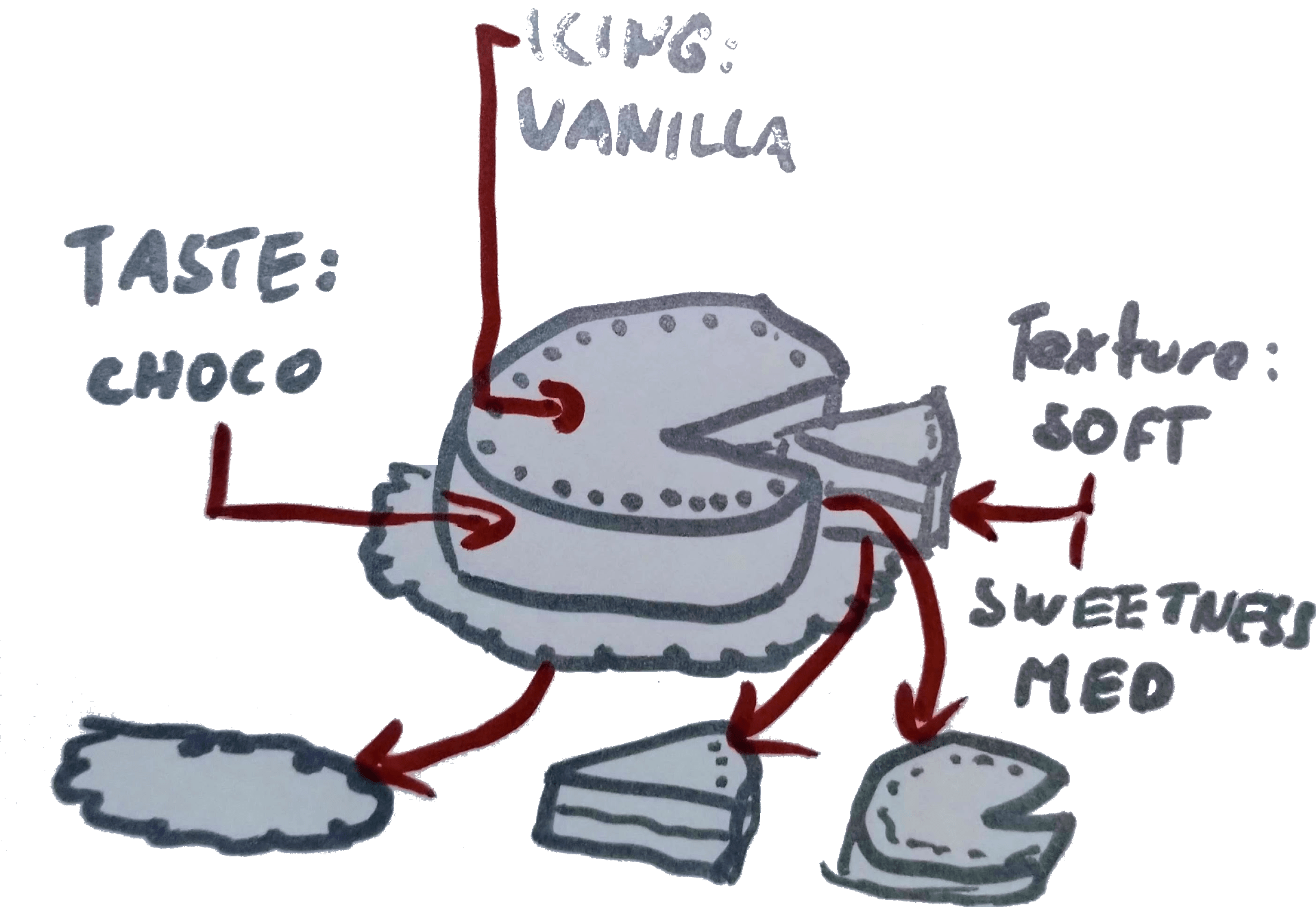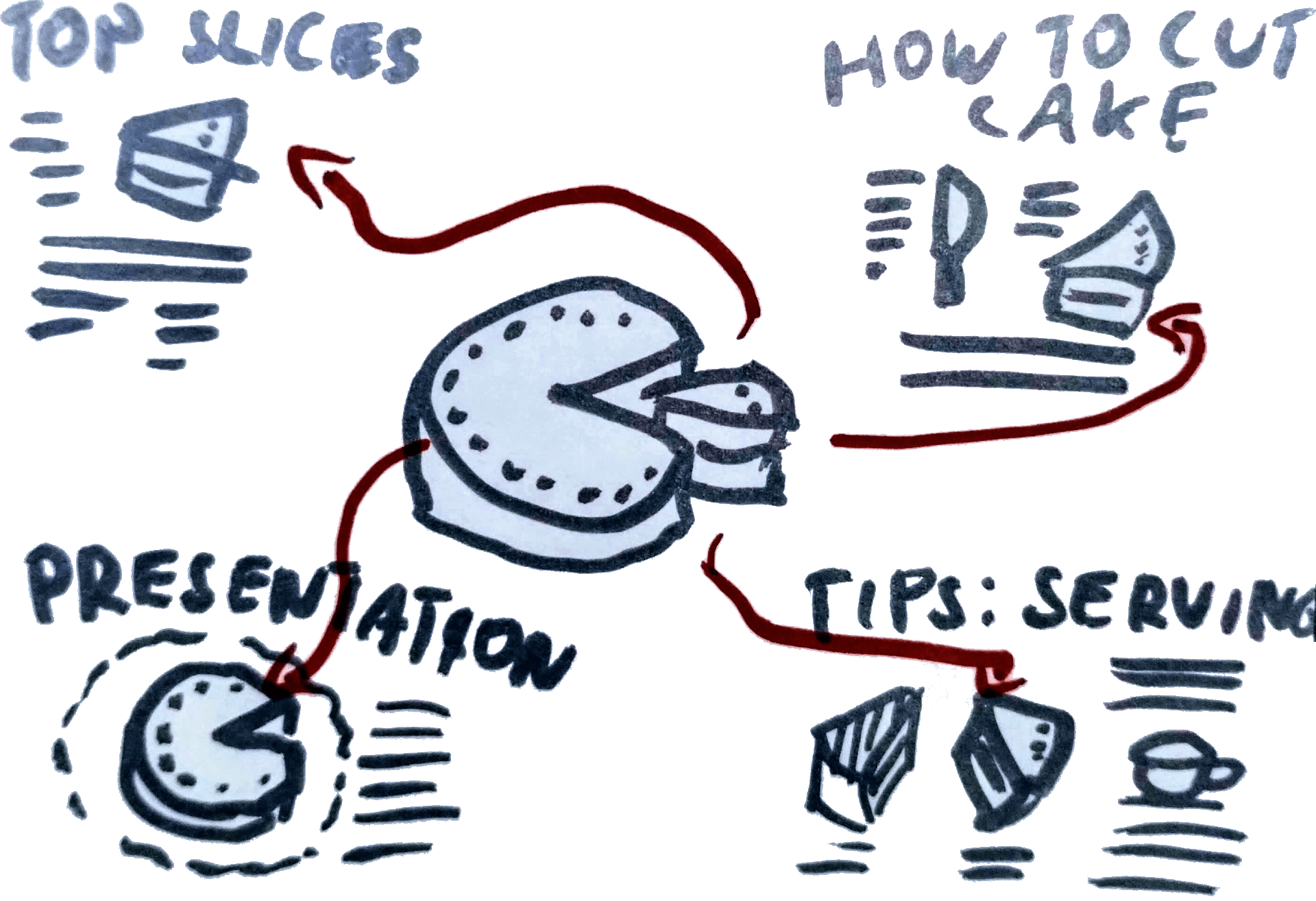
Delete what you can
You probably already have existing content, which you’ve identified as core content. Look at the pages you already have. Remove everything which is not needed. That’s the simplest way to get your content type structure.
You have to be pretty merciless when removing unnecessary things. Get rid of decorative images, styles. Remove unnecessary information. Ask yourself, does this text help my customers or my business? No? Get rid of it!
It’s even easier if you have multiple pages with the same or similar content. Keep what repeats, remove the rest.
Thoughtfully add what is missing
You can (and probably will) need to re-add removed content step by step, but think of it as supporting content, supporting content types. If you have a piece of content about the discovery of chocolate than great, use it. However don’t embed it with the actual content type representing cakes.
This brings me to related content. If you don’t have relationships (represented by direct links or tags) then your content type is incomplete. Check if you are missing metadata, which is not included in the actual content. Are there possible synonyms which are often used to describe this content piece? Add a way for the authors to include those. The same goes for acronyms. You can even include your company business goals as a selectable taxonomy term.
You can think about modeling and representing real objects (even databases), however only include content editors are responsible for. Don’t overwhelm them.
💡 What to include into a content type? In short:
- Remove unnecessary content (formatting, layouts, superfluous information)
- Check related content pieces to identify repeated content – that’s the most useful content you have, remove the rest
- Slowly re-add supporting content
- Add relationships, links, tags and metadata
- Think about the users of the content model


